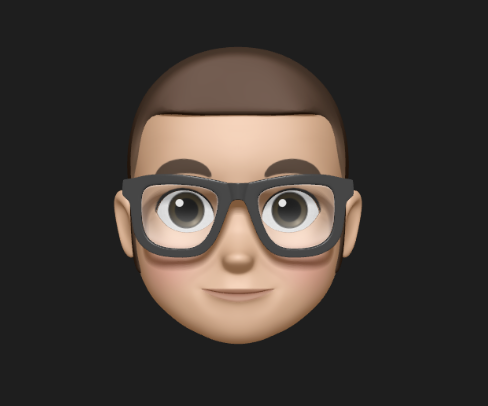 Freelancer tips
Freelancer tips Top 10 Platforms to Find Remote Work & Work from Home
Keen to ditch the commute and work from home? Find your dream remote role on one of these top 10 sites.



Have you ever been in an interview where finding the right words to showcase your skills is a struggle? You know you have the experience, but articulating it with clarity and confidence can be challenging. This is where the STAR Method comes into play—a technique designed to help you answer each question precisely, narrating your achievements and skills in a compelling way.
In this article, you’ll learn how to use this technique to impress in every interview and avoid common pitfalls. If you want to stand out and secure a great job opportunity, this method is something you can't afford to ignore.
The STAR Method is a selection technique designed to evaluate the competencies and experiences of candidates going through a selection process to be hired by a company or to start a freelance project. Just as HR departments and business owners use the STAR Method to hire the best possible staff, candidates can also study this method to improve their chances of securing a position.
This method helps you structure your responses in four essential parts: Situation, Task, Action, and Result.
Situation: This is where you "set the stage." Briefly describe the context so the interviewer can understand the story and the factors involved.
Task: Explain your responsibility or the specific challenge in that situation.
Action: Detail the concrete actions you took to address the situation. This is the heart of your response, so be specific.
Result: Describe the positive outcomes of your actions. If possible, quantify this success with figures or concrete achievements.
For example, imagine you're in an interview for a customer service position, and they ask about a time you had to handle a difficult customer. You could respond with STAR like this:
Situation
: “In my previous job, a customer was unhappy because their order arrived incomplete just before an important event.”
Task
: “My responsibility was to ensure they received the full product on time.”
Action
: “I located the missing product at a nearby store and coordinated a special delivery for the next day.”
Result
: “The customer was so grateful that they shared a positive review on several platforms, boosting our reputation.”
Picture this: you're in an interview for a position at a global company that could allow you to work as a digital nomad, and the first question they ask is:
"Tell me about a time you faced a challenge and overcame it."
Instantly, your pulse quickens, and even if you have a good answer in mind, it might be tough to structure it clearly. The STAR Method not only organizes your responses but also helps you calm your nerves and communicate confidently. Why? Because you have a clear plan.
Some key advantages of the STAR Method include:
Clear narrative structure: Each section of the method (Situation, Task, Action, and Result) acts as a "script" that helps you follow a logical flow and avoid rambling. This way, you demonstrate your ability to explain processes and outcomes clearly.
Increased confidence: Remembering this structure reduces the chances of blanking out or losing your train of thought.
Facilitates comparison among candidates: In a competency-based selection process where all applicants are qualified, organized and precise responses stand out and leave a lasting impression.
Reflects adaptability and results focus: By sharing stories of how you overcame challenges, you demonstrate resilience and results-oriented qualities—traits that companies seek in highly competitive environments.
The STAR Method is useful for any profile, including remote work, where companies look for candidates who can communicate clearly and effectively across various channels.
Here’s a guide to prepare your own STAR response. To make the most of this technique, practice each part until you feel comfortable with the flow.
Identify the right situation: Not every experience is ideal for an interview. Choose examples where you resolved a problem or achieved a goal relevant to the position. For instance, if you're applying for a project manager role, select situations where your planning and organization were essential.
Define your task: Ensure the interviewer understands your role. Were you directly responsible for the project, or were you supporting a team? This detail is crucial as it helps them grasp the scope of your actions.
Specific actions: This is where you show the “how.” Think about the skills you want to highlight (leadership, negotiation, analysis) and describe exactly what you did. For example, you could say, “I led a crisis meeting where we restructured the delivery plan and reassigned resources to meet the tight deadline.”
Quantify the results: The final part is your chance to demonstrate the impact of your actions. Think of specific figures or testimonials that illustrate your success: “As a result, the project was delivered on time, and the client renewed the annual contract with a 20% increase in their investment.”
Here are some practical examples of how to answer common interview questions with STAR.
Situation
: “In my previous marketing role, the content approval process was slow, causing delays.”
Task
: “My task was to find a way to speed up the process without compromising quality.”
Action
: “I implemented a task management tool and designed a streamlined approval flow with fewer steps.”
Result
: “We reduced approval time by 40%, which increased efficiency and allowed us to launch campaigns on schedule.”
Situation
: “During the pandemic, our company shifted to remote work overnight.”
Task
: “My responsibility was to ensure my team maintained productivity in this new setting.”
Action
: “I set up daily 10-minute check-ins to adjust priorities and ensure everyone stayed aligned.”
Result
: “Our team maintained 90% productivity and met our quarterly targets.”
Keep in mind these are simplified examples. In reality, you should demonstrate your communication skills to describe contexts and synthesize information that effectively connects with the company’s or client’s needs.
While the STAR Method is effective, certain mistakes can reduce the impact of your responses. Here are some common errors and how to avoid them to present yourself as the ideal candidate:
Lack of context: Jumping straight to the problem without enough context can leave the interviewer confused. Ensure you set the scene for them—just enough for them to understand the scenario.
Vague actions: Not being specific in the "Action" is a common mistake. It’s essential to clearly describe what you did, how, and why. By using detailed and clear examples, you not only strengthen your narrative but also show your proactive approach.
Forgetting the impact: The result of your actions is crucial. The impact shows the interviewer your effectiveness. Include concrete figures or achievements as they lend credibility to your story and showcase your ability to drive results.
Not practicing beforehand: Although the STAR Method gives you a structure, lack of practice can make your story seem muddled. Rehearse your responses to ensure you deliver them fluently, including relevant details, with a confident, natural tone.
Not researching the company or brand beforehand: This is a critical mistake. If you’re aiming to work for a foreign company, thoroughly researching its values, target audience, and specific needs is essential. This knowledge allows you to tailor your answers and show that you did your homework, connecting better with the interviewer and demonstrating your interest and professional preparation.
To help you master the STAR Method, here’s a practical, specific template for social media professionals or community managers. Below, you’ll find examples and tips for creating impactful responses, along with some non-verbal communication tips to stand out in your interviews.
Situation: Explain the context and the problem you faced.
Example: “In my previous position as a Community Manager, I noticed that social media interactions had dropped by 30% in the last three months, impacting brand visibility.”
Tip: Show confidence at the start of your response. An upright posture and a clear, firm voice when describing the problem reflect confidence in your ability to tackle challenges.
Task: Clearly define your responsibility in that situation.
Example: “My responsibility was to design a content strategy that would increase engagement and improve the brand’s connection with its target audience, especially on Instagram and Facebook.”
Tip: Demonstrate confidence by maintaining eye contact with the interviewer as you describe your task. This reflects commitment and focus on solving the problem.
Action: Detail the specific actions you took.
Example: “After analyzing high-performing content, I organized a calendar with more interactive posts, including polls and live videos. Additionally, I scheduled posts strategically to maximize reach.”
Tip: Be dynamic when telling your story. Use subtle hand gestures to emphasize points and convey enthusiasm for your role and the solutions you implemented.
Result: Present the outcomes and their impact.
Example: “In two months, we increased interactions by 50% and doubled our number of active followers on Instagram. The campaign was so successful that the company extended it to other platforms.”
Tip: A subtle smile can highlight pride in your work and show a positive attitude. If possible, add graphs or visuals that back up your results.
When aiming for high-paying international roles, the STAR Method can be your secret weapon to stand out. By organizing your responses with clarity and purpose, this technique ensures you effectively showcase your skills and experience. And when it comes to managing payments from abroad, DolarApp is the perfect partner—helping you receive payments in dollars seamlessly, without the hassle of currency exchange.
In short, mastering the STAR Method sharpens your interview responses, and pairing it with DolarApp lets you manage global earnings with ease.

The world has borders. Your finances don’t have to.
 Freelancer tips
Freelancer tips Keen to ditch the commute and work from home? Find your dream remote role on one of these top 10 sites.

 Freelancer tips
Freelancer tips Every person has a potential they can leverage to expand their freelance career. Discover yours in this post by taking a quick quiz

 Freelancer tips
Freelancer tips Want to protect your passwords? Discover how the LastPass password generator can help you create secure keys to protect your data.


